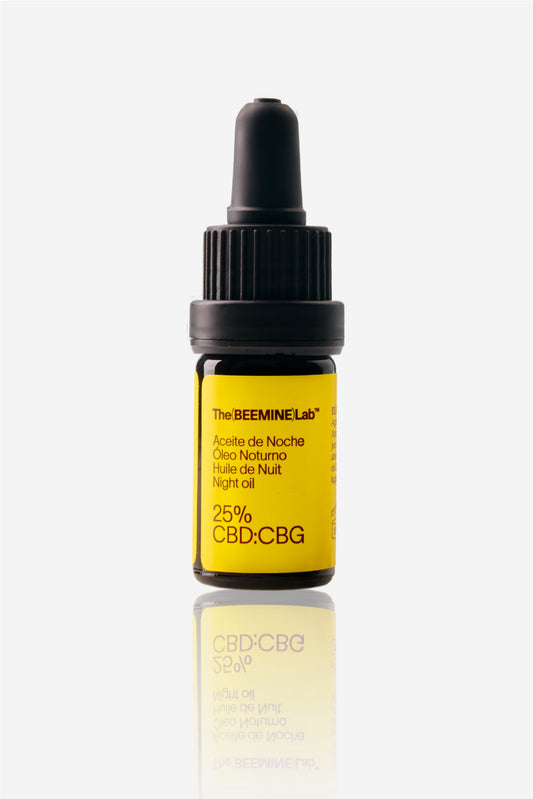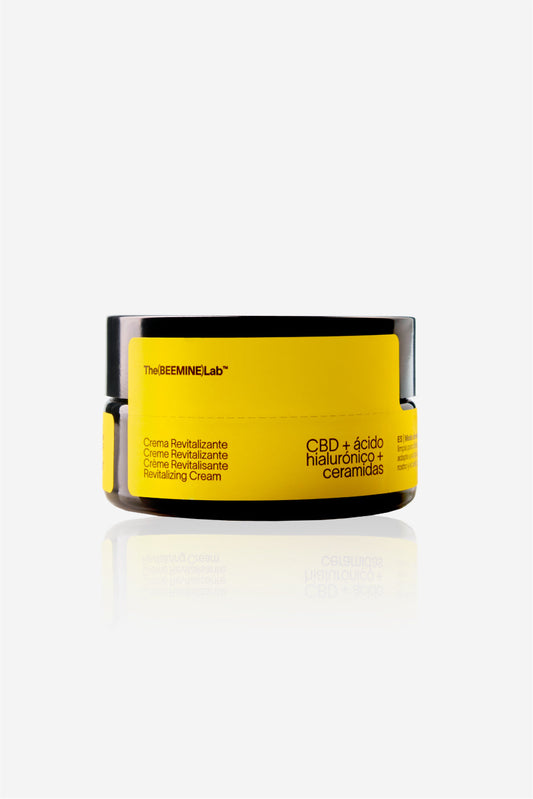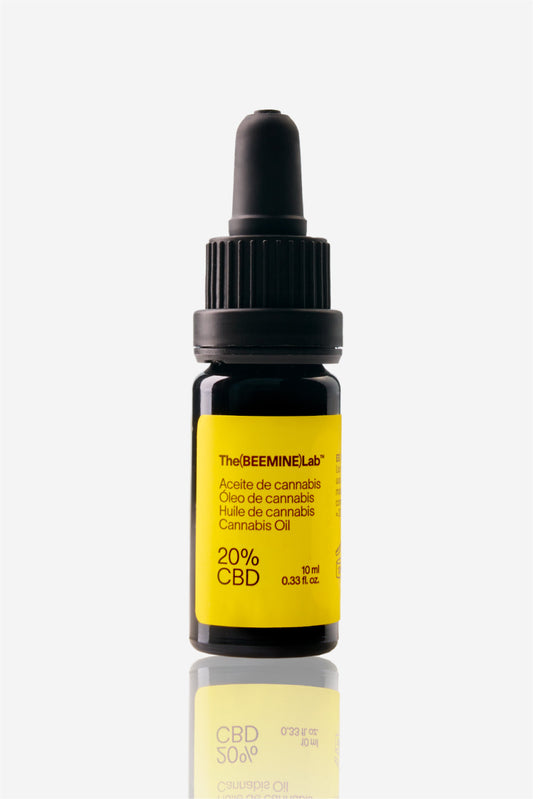What is CBD and what is it used for?
Cannabidiol or CBD is one of the main active ingredients of the Cannabis plant, known today worldwide for its therapeutic properties recognized by the WHO . The importance of CBD in the therapeutic field is due to its low level of toxicity compared to other drugs, the fact that it does not cause tolerance or dependence and its multiple medicinal properties, among which analgesic, anti-inflammatory, neuroprotective and relaxing properties stand out at a physical and mental level. (1-2-3-4)CBD legislation: key points for the UN to recognise its therapeutic properties
In 2017, the WHO recommended declassifying CBD as a narcotic and controlled or prohibited substance, due to its lack of toxicity and risk of abuse. (1) Following this recommendation, many countries modified their laws , allowing the use of CBD without many limitations until 2019, the year in which the European Commission declared Cannabis extracts as “novel food”, allowing only its use, production and registration as a cosmetic and prohibiting its use in food (in Europe). However, in 2020 the UN declassified all cannabis compounds from Schedule IV of the Single Convention on Narcotic Drugs, stating that CBD is a safe substance to be considered food . (12) So in the very near future, we should see a classification of CBD both at the food and pharmaceutical level . Leaving aside the European regulatory processes, the safety of CBD for human consumption is very evident, for several reasons:- There are many countries that allow its commercialization as food and there are studies on its safety and guidelines on its production (13)
- There are many countries that have approved a medicinal cannabis program in their health system.
- Major pharmaceutical companies have been studying and developing cannabinoid medicines for internal use for many years, particularly via the sublingual route (11).
What is the most effective method of using CBD?
There are different ways to take CBD , each with its own peculiarities:- Inhalation : through inhalation, the effect appears immediately and at its maximum potency, gradually decreasing until it disappears after 2 hours. The most suitable and effective way would be vaporization, which ensures high bioavailability (35%-50%) compared to combustion (30%), which also entails risks and damages to the health of the organism. (5-6)
- Ingestion : through the ingested route, the effect appears after 1-2 hours and lasts for 8-10 hours in an irregular manner, since it depends on the metabolism of each person. Due to the passage through the digestive system, ingestion ensures a low bioavailability (4%-12%), in addition to being able to facilitate an interaction with medications (7).
- Sublingual : via the sublingual route, the effect appears after 20-30 minutes and remains stable for approximately 6 hours. By taking CBD sublingually correctly, the passage of CBD through the digestive system is avoided and its bioavailability is increased (15%-35%), in addition to avoiding possible drug interactions and ensuring the stability of the effect (8-9). For these reasons, the sublingual route represents the most effective way to use CBD internally.
- External use : through the topical route the effect is concentrated in the area of application for about 2-3 hours, unlike transdermal use which allows a systemic effect.
How to take sublingual CBD in regulated countries?
Due to the above-mentioned advantages, the sublingual route is the most appropriate way to use CBD to deal with physical and psychological problems that manifest themselves in a stable and/or chronic way, since it would ensure a continuous and stable effect . Through this route, CBD is absorbed by the sublingual mucosa and reaches the bloodstream quickly , avoiding first-pass metabolism and increasing bioavailability compared to ingestion (10). Sublingual products are oils with different concentrations of CBD (minimum 5%), which allow administration by means of a dropper or a spray. To properly administer sublingually, the drops or sprays must be applied under the tongue and held for at least 60-90 seconds without swallowing. Tips: You need to get used to taking sublingual doses, as the first few times you will notice an increase in saliva in your mouth, which will be a bit uncomfortable to hold for more than a minute. If you have accumulated a lot of saliva, you can spread the liquid around your mouth before swallowing so that it stays in your mouth for longer.How long do you leave CBD under your tongue?
Each person has a different organism and a different sensitivity to substances, therefore there is no standardized CBD dosage for types of person or types of pathology. In addition, Cannabis has a biphasic effect, so to obtain the best benefits, the appropriate dose must be used for each person, since an excessive dose could facilitate the appearance of some side effects (such as nausea and headache) and even reduce the benefits. For these reasons, it is always advisable to contact a specialized health professional who can provide appropriate advice and monitoring . In general, it is advisable to start with low or medium concentration products (5%-10%), starting with one drop per dose and gradually increasing every 2 or 3 days depending on the sensations perceived until the effects appear.How many drops of CBD do you take?
To optimize sublingual absorption, it is advisable to use the smallest number of drops possible, since the sublingual space is limited. For this reason, it is very important not to exceed the number of drops in each dose, using a maximum of 6-7 drops. If I am taking 6-7 drops and I want to increase the dose, how do I proceed?- The first option is to use a more concentrated oil to reduce the number of drops (6 drops at 5% correspond to 3 drops at 10%, 2 at 15% or 1 at 30%)
- The second option is to use the same oil and divide the intake into two consecutive times: for example, take 4-5 drops initially and the other drops 2-3 minutes later.
How long does it take for CBD to take effect?
Through the sublingual route, the effect lasts approximately 6 hours, therefore if a continuous effect is needed, 3 doses can be taken daily: morning, afternoon and night . This is the case of chronic problems, such as chronic pain and inflammation, or psycho-physical problems such as anxiety and excessive stress. The effect of CBD taken sublingually can vary in duration , so in some people it could last 4-5 hours and in others up to 12 hours. In these cases, through monitoring it is possible to increase or decrease the doses according to needs. In addition, depending on the symptoms of each person, it is possible to reduce the doses at the times of the day when the symptoms appear.Which CBD product is best for me?
If you want to use CBD on an ongoing basis, to try to relieve stable or chronic problems such as pain, inflammation, emotional problems and states of stress and anxiety, in the United States and/or Canada the sublingual route is recommended (not regulated in Spain), using a low or medium concentration oil under the advice and monitoring of a specialized health professional. To deal with acute problems or to reinforce the effect at specific times, it is possible to complement the treatment using the inhaled route, as in the case of acute pain or anxiety and panic attacks, dosing according to need. If you suffer from skin problems or joint and muscle problems, it is possible to complement the treatment also with the topical route, to concentrate the action of CBD in the area of application. Literature:- CANNABIDIOL (CBD) Pre-Review Report Agenda Item 5.2 Expert Committee on Drug Dependence Thirty-ninth Meeting Geneva, 6-10 November 2017
- CANNABIDIOL (CBD) Critical Review Report Expert Committee on Drug Dependence Fortieth Meeting Geneva, 4-7 June 2018
- Bergamaschi MM, Queiroz RH, Zuardi AW, Crippa JA. Safety and side effects of cannabidiol, a Cannabis sativa constituent. Curr Drug Saf. 2011 Sep 1;6(4):237-49
- Iffland K, Grotenhermen F. An Update on Safety and Side Effects of Cannabidiol: A Review of Clinical Data and Relevant Animal Studies. Cannabis Cannabinoid Res. 2017 Jun 1;2(1):139-154
- McGilveray IJ (2005). Pharmacokinetics of cannabinoids. Pain research & management, 10 Suppl A, 15A–22A.
- Lanz, C., Mattsson, J., Soydaner, U., & Brenneisen, R. (2016). Medicinal Cannabis: In Vitro Validation of Vaporizers for the Smoke-Free Inhalation of Cannabis. PloS one, 11(1).
- Chayasirisobhon S. (2020). Mechanisms of Action and Pharmacokinetics of Cannabis. The Permanent journal, 25, 1–3.
- Mechoulam, R., Parker, L.A., & Gallily, R. (2002). Cannabidiol: an overview of some pharmacological aspects. Journal of clinical pharmacology, 42(S1), 11S–19S.
- Narang, N.C., Sharma, J., & Baba, S. (2011). SUBLINGUAL MUCOSA AS A ROUTE FOR SYSTEMIC DRUG DELIVERY.
- Hosseini, A., McLachlan, A.J., & Lickliter, J.D. (2021). A phase I trial of the safety, tolerability and pharmacokinetics of cannabidiol administered as single-dose oil solution and single and multiple doses of a sublingual wafer in healthy volunteers. British journal of clinical pharmacology, 87(4), 2070–2077.
- Cannabis-based medicines--GW pharmaceuticals: high CBD, high THC, medicinal cannabis--GW pharmaceuticals, THC:CBD. (2003). Drugs in R&D, 4(5), 306–309.
- https://www.emcdda.europa.eu/news/2020/cannabidiol-cbd-is-not-considered-a-narcotic-drug-under-european-law_en
- Walker, LA, Koturbash, I., Kingston, R., ElSohly, MA, Yates, CR, Gurley, BJ, & Khan, I. (2020). Cannabidiol (CBD) in Dietary Supplements: Perspectives on Science, Safety, and Potential Regulatory Approaches. Journal of dietary supplements, 17(5), 493–502.







